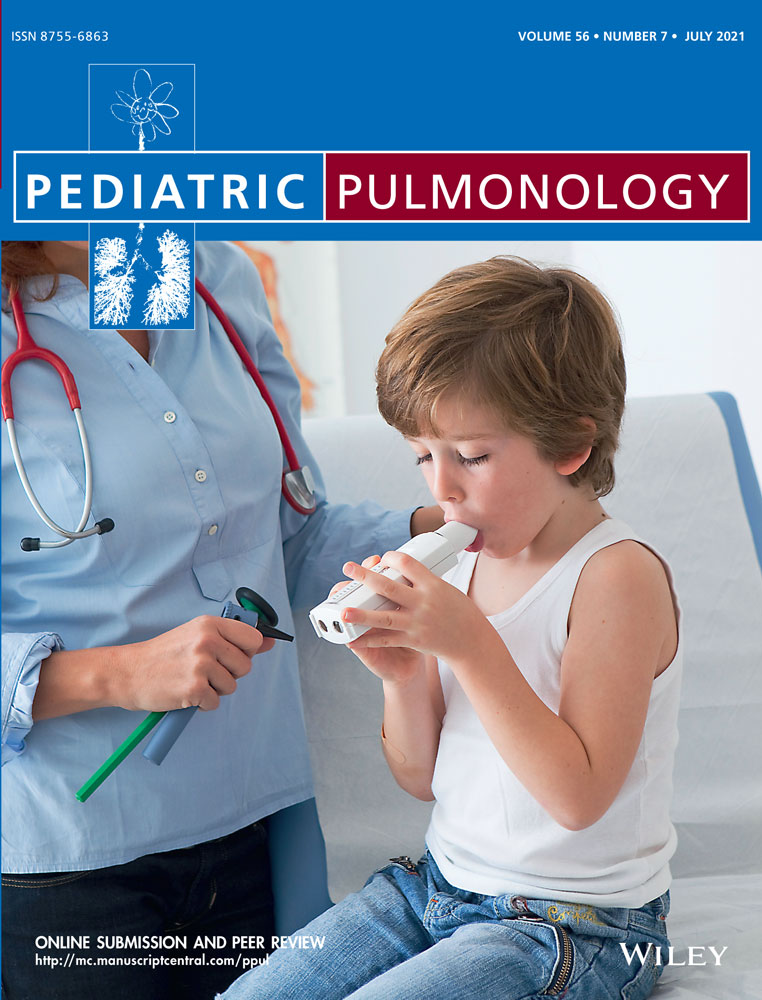Pulmonary manifestations of immune dysregulation in CTLA-4 haploinsufficiency and LRBA deficiency
Martha P. Fishman and Alicia Casey contributed equally to this study.
Abstract
Objective
The primary immunodeficiency syndromes of cytotoxic T lymphocyte-associated protein 4 (CTLA-4) haploinsufficiency and lipopolysaccharide-responsive and beige-like anchor protein (LRBA) deficiency present with multisystem immune dysregulation. The aim of this study was to characterize and compare the pulmonary manifestations of these two diseases.
Methods
We retrospectively analyzed the pulmonary clinical, radiologic, and histopathologic characteristics of six patients with CTLA-4 haploinsufficiency and four patients with LRBA deficiency with pulmonary involvement followed at a large tertiary care center.
Results
Chronic respiratory symptoms were more frequent in patients with LRBA deficiency versus CTLA-4 haploinsufficiency (3/4 vs. 1/6). Cough was the most common respiratory symptom. Abnormalities in pulmonary exam and pulmonary function testing were more frequent in LRBA deficiency (4/4, 2/4) compared to CTLA-4 haploinsufficiency (1/6, 2/6). Chest computed tomography (CT) findings included mediastinal lymphadenopathy (4/4 in LRBA deficiency vs. 1/4 in CTLA-4 haploinsufficiency), pulmonary nodules (4/4, 3/4), ground-glass opacification (4/4, 3/4), and bronchiectasis (3/4, 1/4). Lymphocytic inflammation, concentrated bronchovasculocentrically and paraseptally, was the predominant pathologic finding and was observed in all patients who had lung biopsies (N = 3 with LRBA deficiency; N = 3 with CTLA-4 haploinsufficiency).
Conclusion
Despite phenotypic overlap amongst these diseases, LRBA deficiency demonstrated greater severity of pulmonary disease, indicated by respiratory symptoms, pulmonary exam, and intrathoracic radiologic findings. Chest CT was the most sensitive indicator of pulmonary involvement in both disorders. Lymphocytic inflammation is the key histologic feature of both disorders. Pediatric pulmonologists should consider these disorders of immune dysregulation in the relevant clinical context to provide earlier diagnosis, comprehensive pulmonary evaluation and treatment.
CONFLICT OF INTERESTS
The authors declare that there are no conflict of interests.
Open Research
DATA AVAILABILITY STATEMENT
The data that supports the findings of this study are available in the supplementary material of this article. Additional data are available from the corresponding author upon reasonable request.




